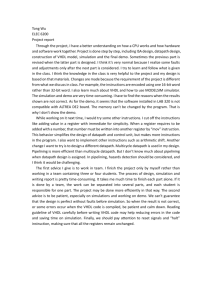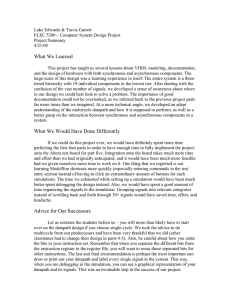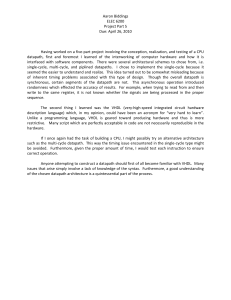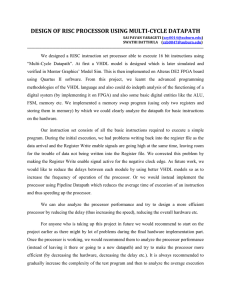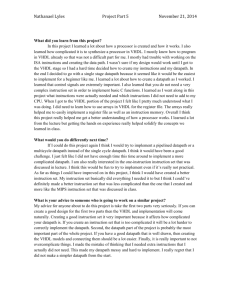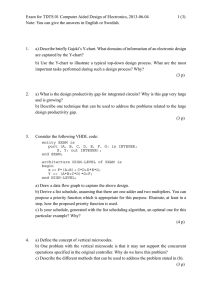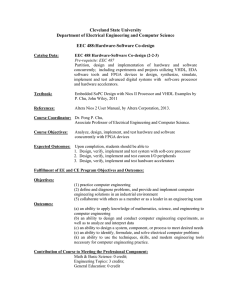learning objectives
advertisement
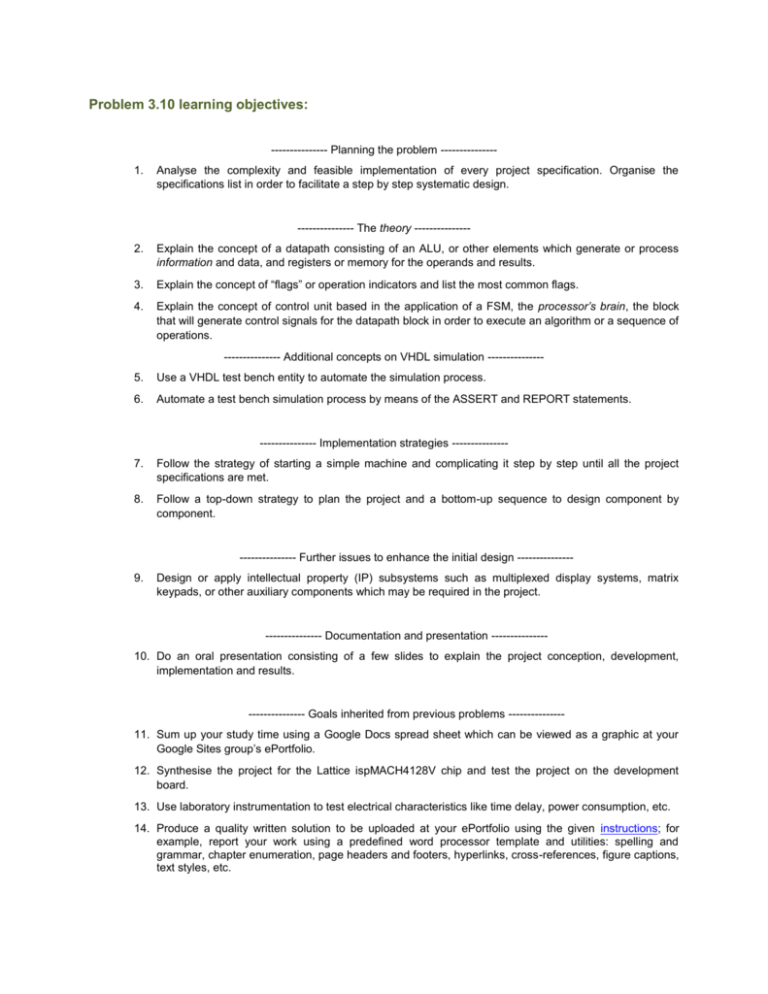
Problem 3.10 learning objectives: --------------- Planning the problem --------------1. Analyse the complexity and feasible implementation of every project specification. Organise the specifications list in order to facilitate a step by step systematic design. --------------- The theory --------------2. Explain the concept of a datapath consisting of an ALU, or other elements which generate or process information and data, and registers or memory for the operands and results. 3. Explain the concept of “flags” or operation indicators and list the most common flags. 4. Explain the concept of control unit based in the application of a FSM, the processor’s brain, the block that will generate control signals for the datapath block in order to execute an algorithm or a sequence of operations. --------------- Additional concepts on VHDL simulation --------------- 5. Use a VHDL test bench entity to automate the simulation process. 6. Automate a test bench simulation process by means of the ASSERT and REPORT statements. --------------- Implementation strategies --------------7. Follow the strategy of starting a simple machine and complicating it step by step until all the project specifications are met. 8. Follow a top-down strategy to plan the project and a bottom-up sequence to design component by component. --------------- Further issues to enhance the initial design --------------9. Design or apply intellectual property (IP) subsystems such as multiplexed display systems, matrix keypads, or other auxiliary components which may be required in the project. --------------- Documentation and presentation --------------10. Do an oral presentation consisting of a few slides to explain the project conception, development, implementation and results. --------------- Goals inherited from previous problems --------------11. Sum up your study time using a Google Docs spread sheet which can be viewed as a graphic at your Google Sites group’s ePortfolio. 12. Synthesise the project for the Lattice ispMACH4128V chip and test the project on the development board. 13. Use laboratory instrumentation to test electrical characteristics like time delay, power consumption, etc. 14. Produce a quality written solution to be uploaded at your ePortfolio using the given instructions; for example, report your work using a predefined word processor template and utilities: spelling and grammar, chapter enumeration, page headers and footers, hyperlinks, cross-references, figure captions, text styles, etc.
